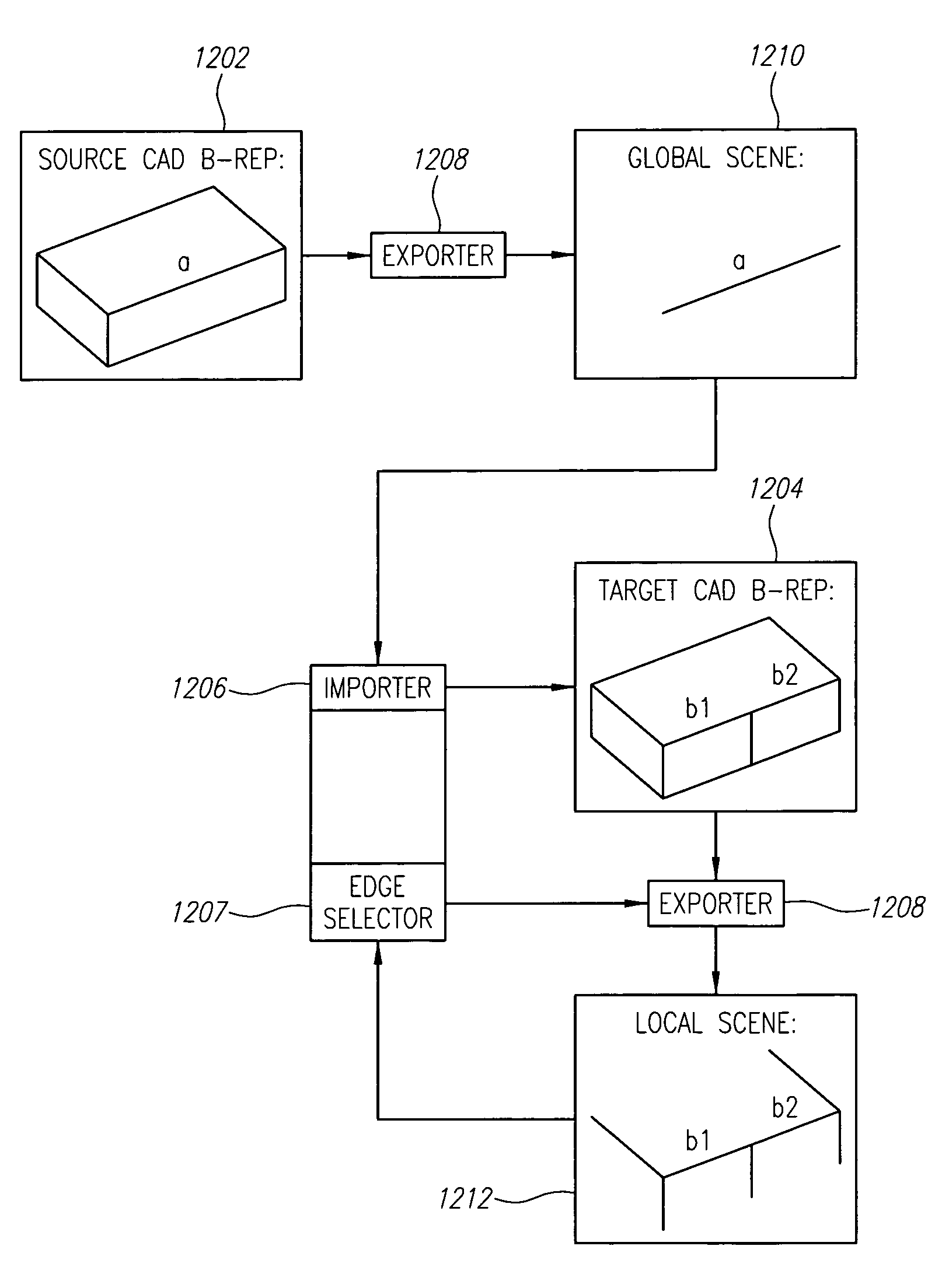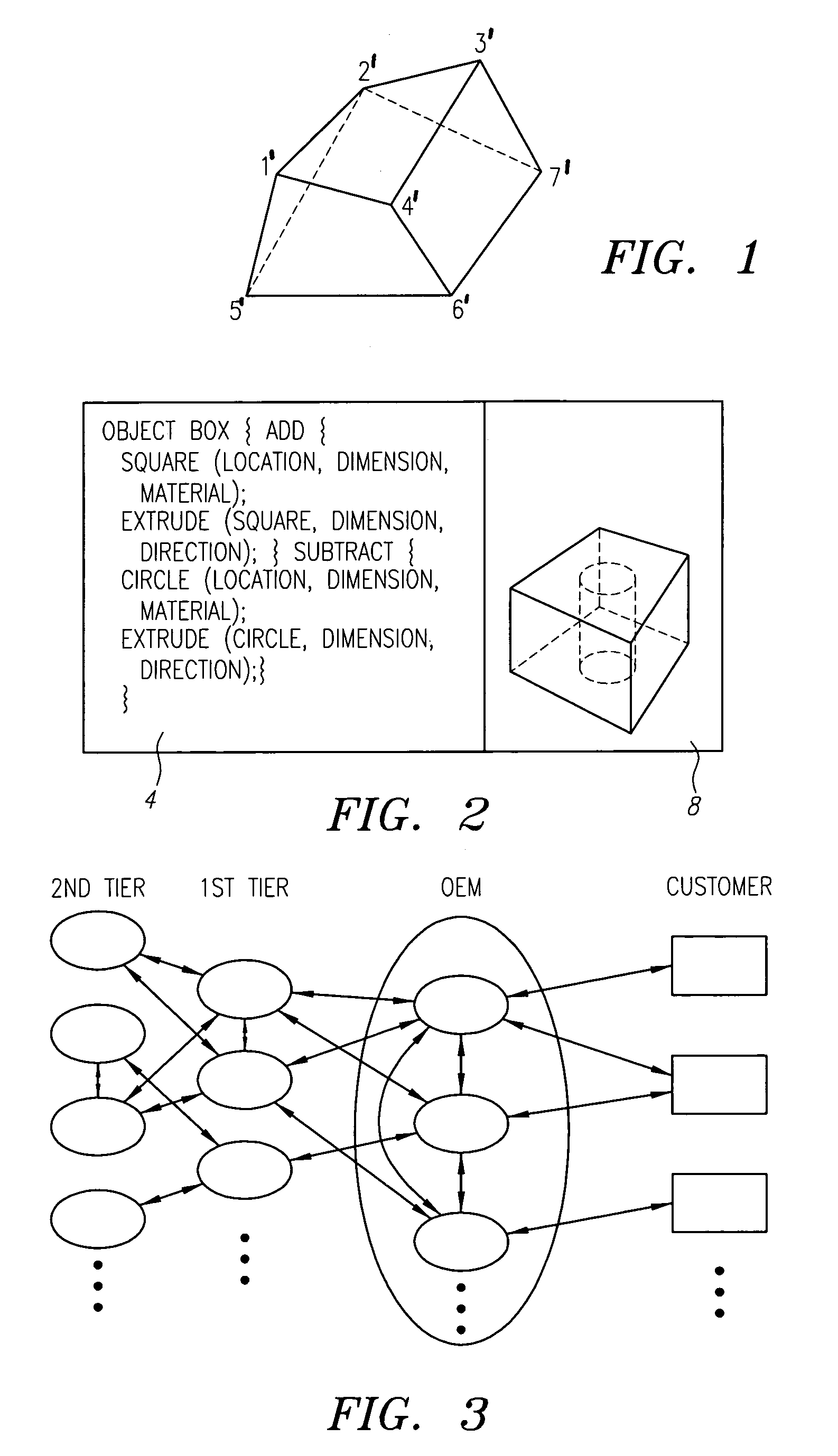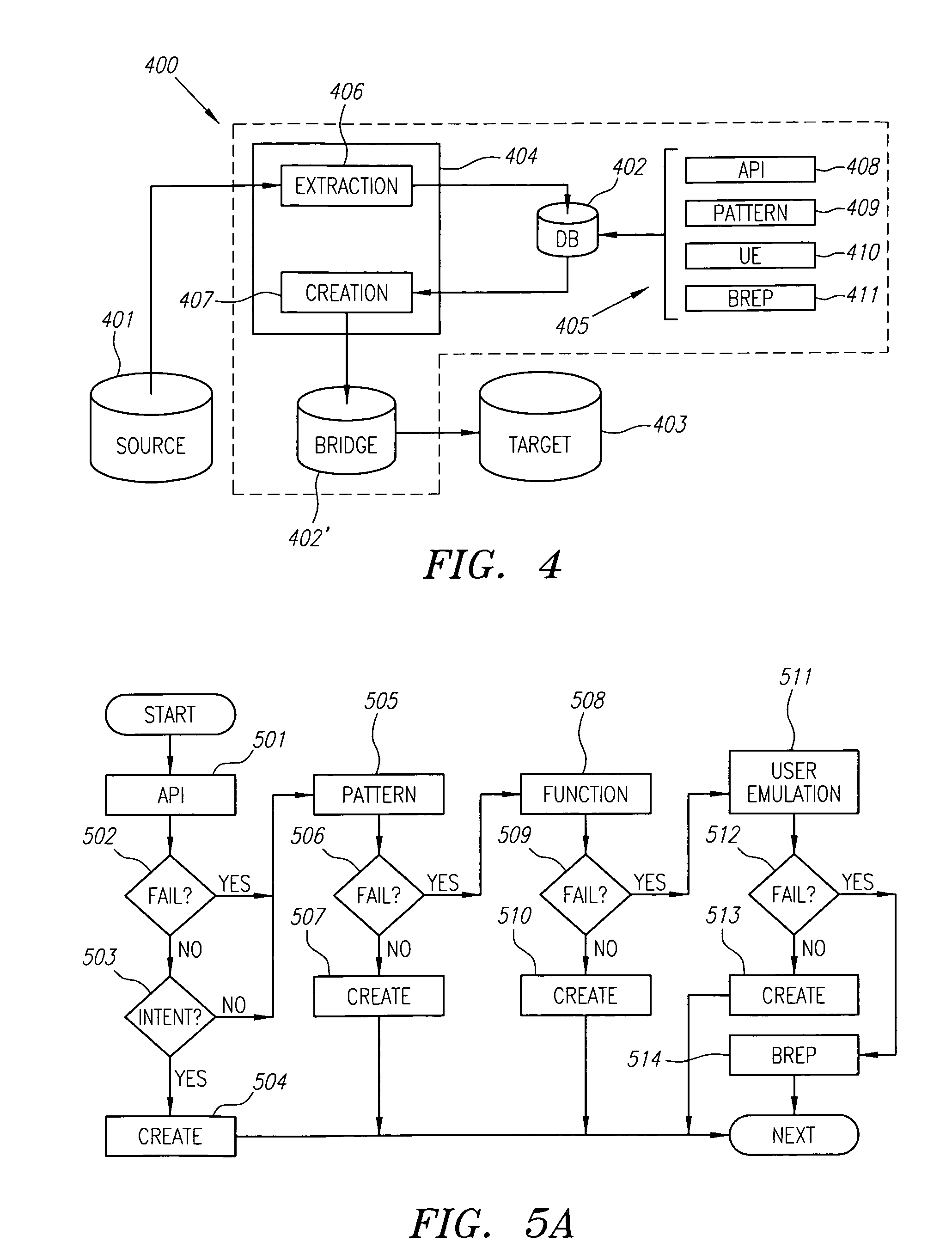Method and apparatus for edge correlation between design objects
a technology of design objects and edges, applied in the field of edge correlation between design objects, can solve the problems of voids, voids, voids, and spatial geometry, and cumbersome methods and painstaking detail, and achieve the effects of disrupting the entire model, rigid and often unforgiving interdependencies between edges, and voids, connections, and spatial geometry
- Summary
- Abstract
- Description
- Claims
- Application Information
AI Technical Summary
Benefits of technology
Problems solved by technology
Method used
Image
Examples
Embodiment Construction
[0029]FIG. 4 is a conceptual drawing of an embodiment of the invention. The invention includes a method and system for exchanging computer aided design data from a source computer system 401 to a target computer system 403. Both the source and target computer systems are used in a computer aided design environment. According to one embodiment, an intermediate system 400 provides the functionality to make the conversion from the source 401 to the target 403 systems. An execution area 404 performs two basic functions. First, the execution area 404 extracts CAD data from the source 401. Second, the execution area creates CAD data that can be used by the target 403. In one embodiment, a database 402 provides a knowledge catalogue 405 of operations that can be performed in either the source 401 or target systems to extract and create the CAD data. Included in the knowledge catalogue 405 are a sequence of operations that are used for the conversion processes, the operations including an a...
PUM
 Login to View More
Login to View More Abstract
Description
Claims
Application Information
 Login to View More
Login to View More - R&D
- Intellectual Property
- Life Sciences
- Materials
- Tech Scout
- Unparalleled Data Quality
- Higher Quality Content
- 60% Fewer Hallucinations
Browse by: Latest US Patents, China's latest patents, Technical Efficacy Thesaurus, Application Domain, Technology Topic, Popular Technical Reports.
© 2025 PatSnap. All rights reserved.Legal|Privacy policy|Modern Slavery Act Transparency Statement|Sitemap|About US| Contact US: help@patsnap.com



